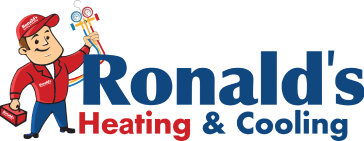When your heating system malfunctions, it’s essential to know what to expect during the repair process. Understanding each step can help you feel more comfortable and prepared. Our professionals strive to provide a seamless experience from start to finish. Whether you’re dealing with furnace repair, mini split issues, or general heating repair, our team is equipped to handle it all.
Initial Assessment and Diagnosis
The first step in any furnace repair process is an initial assessment and diagnosis. When our technicians arrive, they begin by asking you detailed questions about the issues you’ve noticed with your furnace. This helps them understand the problem from your perspective and guides their initial inspection.
Once our professionals gather information from you, they conduct a thorough examination of the furnace. They check for common problems such as faulty components, wear and tear, and signs of damage. This includes inspecting the thermostat, heat exchanger, blower motor, and any other essential parts. By performing these checks, they can identify the root cause of the malfunction.
The diagnostic process may also involve running tests to measure the furnace’s performance. These tests help confirm the initial findings and ensure that all potential issues are identified. Once the assessment is complete, our technicians discuss their findings with you. They explain the identified problems, their causes, and the necessary repairs to get your furnace back to optimal working condition.
Step-by-Step Repair Process
After diagnosing the problem, our professionals proceed with a step-by-step repair process designed to address the identified issues efficiently and effectively. Here is a typical sequence of steps our technicians follow:
1. Turn Off the Power: Safety is the first priority. Our technicians ensure that the furnace is powered off before starting any repairs to prevent accidents.
2. Remove Faulty Components: The next step involves removing any faulty parts identified during the diagnosis. This may include components such as burnt-out motors, worn-out belts, or malfunctioning thermostats.
3. Install New Parts: Our professionals then install new, high-quality replacement parts. They ensure these are compatible with your furnace model to guarantee efficiency and longevity.
4. Reconnect and Test: Once all repairs are made, our technicians reconnect all components and turn the power back on. They perform a series of tests to ensure the furnace is operating correctly. This includes checking for proper airflow, thermostat function, and overall system performance.
5. Final Inspection: After testing, our professionals conduct a final inspection to ensure all repairs are correctly completed and the furnace is safe to use. They also verify that the system operates at peak efficiency.
Common Issues Addressed During Heating Repair
Furnace repair often involves addressing a range of common issues that can affect system performance. One frequent problem is a malfunctioning thermostat. If the thermostat isn’t working properly, it can cause the furnace to cycle on and off too frequently or fail to heat your home effectively. Our professionals calibrate or replace faulty thermostats to ensure accurate temperature control.
Another common issue is a clogged or dirty air filter. Dirty filters restrict airflow, reducing the furnace’s efficiency and causing it to work harder than necessary. This can lead to overheating and even system failure. Our technicians replace or clean the filters, improving airflow and system performance.
Blower motor issues are also a common problem. When the blower motor fails, the furnace can’t circulate warm air throughout your home. Our technicians inspect and repair or replace the motor to restore proper function. Additionally, igniter or pilot light problems can prevent the furnace from turning on. Our professionals address these ignition issues by repairing or replacing faulty components.
Post-Repair Evaluation and Maintenance Tips
After completing the necessary repairs, our professionals conduct a post-repair evaluation to ensure your furnace operates efficiently. They test the system to confirm that all problems have been resolved and that the furnace is running smoothly. This final inspection checks for proper airflow, correct thermostat function, and overall system performance.
Maintenance is key to preventing future issues and extending the lifespan of your heating system. Regularly replacing air filters is a simple yet effective way to maintain your furnace. Dirty filters reduce efficiency and can lead to more significant problems over time. Our technicians recommend changing filters every one to three months, depending on usage.
Another important maintenance task is scheduling annual HVAC services. A professional tune-up includes cleaning and inspecting the system, identifying potential issues before they become major problems. Our professionals can also lubricate moving parts, check electrical connections, and ensure that all components are in good working order.
You should also keep the area around your furnace clean and free of debris. This ensures proper airflow and reduces the risk of fire hazards.
Conclusion
Maintaining a well-functioning furnace is essential for comfort and energy efficiency. Addressing common heating repair issues and following a structured repair process ensures that your system operates effectively. By preparing your furnace for repair and following our post-repair tips, you can keep your heating system running efficiently throughout the year.
For reliable heating repair in Portsmouth, trust the experts at Ronald’s Heating & Cooling. Schedule your service today to ensure your home stays warm and comfortable all year long!



